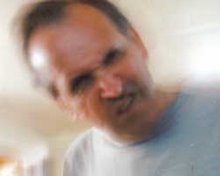Whilst puttering around looking for automobile failures and extra large things that blew up I came across this fellow and promised myself I'd find 5 minutes to write something down. Frederick William Lanchester was an inventor, engineer and transportation pioneer. Born this day in 1868 in London, England, he was one of eleven children ( 3 sisters and 6 brothers).
To say that he was an engineer doesn't quite cover the sheer range of his work. He worked on cars, boats, planes (before and after they were invented) photography, physics, and even created an entire new field called operations research. A real Renaissance Man.
He built his first engine in 1893 and together with his brothers, who had built a boat, created in 1894, the first powerboat to ply English waters. The following year he built, with the aid of another brother,(thank God they weren't all barbers) one of the first cars in England. The performance sucked according to Frederick so he built another engine with more power and a smoother feel. He had already begun to realize that the consumer wanted a quiet, comfortable vehicle to ride in. Automobile owners needed to feel safe and secure.The image of a soot covered mud encrusted Shakelton-esque trail blazer that owning an automobile then required of its owner was foreign to Lanchester.
In 1900 the brothers formed the Lanchester Engine Company and utilized Fredericks advanced designs like mid mounted engine for stability, 3 speed automatic transmission and a unique disc braking system that braked the clutch disc rather that the wheels.
Frederick never stopped with innovative new designs. When he invented larger and more powerful engines he again was faced with the vibrations and noise that occured. This would never do. He set about to design counter balancing shafts to smooth out the engine performance. A feature used today in high preformance cars.
Through several permutations of his company, Lanchester continued to build cars until he was bought out by Daimler in 1933. Tinted glass, left hand steering for export models were some of the options available.



No comments:
Post a Comment